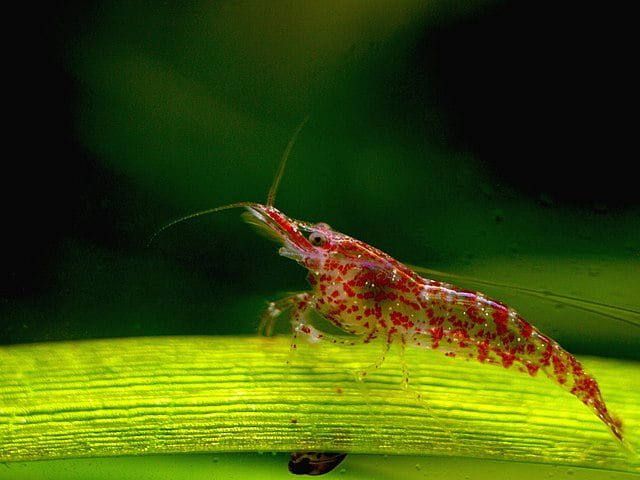What do the Patagonian scallop, the New Zealand sea urchin, the Atlantic Northern shrimp and the Mediterranean sea bass have in common? They are all socio-economically important seafood species – and all potentially impacted by climate change and ocean acidification. Scientists from fifteen countries are meeting this week (26-30 August) at the University of Gothenburg Sven Lovén Centre for Marine Infrastructure in Kristineberg, Sweden, to kick off a new 4-year IAEA Coordinated Research Project (CRP) to better understand ocean acidification’s impacts on these and other important seafood species.
The participants will use a standardized experimental approach to test the effects of possible future ocean acidification conditions on 26 different species of shrimp, sea urchins, fish and molluscs (e.g. mussels, oysters, abalone and geoduck) over a period of eight months. Project partners will measure a set of commercially relevant parameters such as growth, survival, taste and texture. They will also study additional parameters depending on the expertise of their respective laboratories, including the use of nuclear and isotopic techniques to look at changes in metabolism, calcification and bioaccumulation of metals. The project is expected to generate a comparable baseline on sensitivity to ocean acidification in key seafood species around the world. Project participants will engage with local fisheries, aquaculture industries and the general public through activities such as seafood tastings, with the goal to raise awareness and inspire concrete actions for adaptation and mitigation in their respective countries.
Sam Dupont, a marine biologist at the University of Gothenburg and the host of the meeting, said: “Most of the project participants have already received basic to advanced training on how to study biological impacts of ocean acidification following a carefully laid out capacity building strategy. They are now ready to apply the knowledge they have gained and work together through this coordinated research project to produce the high-quality information needed by their respective countries to address the threat of ocean acidification”.
Long-term studies on ocean acidification’s impacts on socio-economically important seafood species in developing countries are still largely lacking. This CRP will fill important knowledge gaps on ocean acidification’s impacts on seafood while building capacity and international collaboration. The project will also explore if organisms have the ability to recover from ocean acidification stress by reversing the chemical conditions in experimental tanks, an adaptation technique that could be implemented in aquaculture.
Patricia Castillo-Briceno, Research Professor at the Faculty of Marine Sciences of ULEAM University in Ecuador, will look at the impacts of ocean acidification on the tropical white shrimp, a key seafood species in her country. “We will share the results from this CRP with representatives from the aquaculture industry and work on potential adaptive solutions together,” she said.
Concern about the impacts of ocean acidification on seafood is increasing world-wide. Ocean acidification is the focus of the United Nations Sustainable Development Goal 14.3 (“minimize and address the impacts of ocean acidification, including through enhanced scientific cooperation at all levels”). The new CRP is funded mainly by Sweden and the United States through the IAEA’s Ocean Acidification International Coordination Centre (OA-ICC), under the IAEA Peaceful Uses Initiative. “This new CRP complements the portfolio of IAEA efforts and projects which support our Member States to respond to the Sustainable Development Goals such as Goal 14, focusing on a sustainable ocean, and Goal 2 on food security,” remarked Mr David Osborn, Director of IAEA’s Environment Laboratories.
The CRP will capitalize on resources, capacity building efforts and methodology developed through the OA-ICC and IAEA Technical Cooperation projects. Successful implementation of this CRP will provide participating Member States and industry with new perspectives and strategies on how to build resilience in their coastal waters to the impacts of ocean acidification.
Stay Always Informed
Join our communities to instantly receive the most important news, reports, and analysis from the aquaculture industry.
THE SCIENCE
As the ocean absorbs carbon dioxide (CO2) released into the atmosphere by human activities, the carbonate chemistry and acidity of seawater are modified in a process known as ocean acidification. A growing number of studies indicate potential negative impacts on marine organisms, with calcifying organisms such as corals and mollusks being particularly vulnerable to changes in seawater chemistry. Scientists at the IAEA’s Environment Laboratories in Monaco are using nuclear and isotopic techniques to investigate the impacts of ocean acidification and its interaction with other environmental stressors.
Although ocean acidification is only one of many factors that can affect seafood sustainability, it has the potential to profoundly affect aquaculture industries, as demonstrated in 2007 in Pacific North West oyster hatcheries. This US$ 270 million-dollar industry nearly collapsed due to decreased survival of oyster larvae linked to ocean acidification conditions.
ABOUT THE OA-ICC
The IAEA Ocean Acidification-International Coordination Centre (OA-ICC) promotes international collaboration on ocean acidification. The OA-ICC organizes training courses in Member States and provides access to data and resources to advance ocean acidification research. The Centre promotes the development of data portals, standardized methodology and best practices. The OA-ICC works to raise awareness of the issue among various stakeholders and inform about the role that nuclear and isotopic techniques can play in assessing its impacts. To achieve these objectives, the OA-ICC works with many international partners and supports global and regional ocean acidification networks.
Source: IAEA
Editor at the digital magazine AquaHoy. He holds a degree in Aquaculture Biology from the National University of Santa (UNS) and a Master’s degree in Science and Innovation Management from the Polytechnic University of Valencia, with postgraduate diplomas in Business Innovation and Innovation Management. He possesses extensive experience in the aquaculture and fisheries sector, having led the Fisheries Innovation Unit of the National Program for Innovation in Fisheries and Aquaculture (PNIPA). He has served as a senior consultant in technology watch, an innovation project formulator and advisor, and a lecturer at UNS. He is a member of the Peruvian College of Biologists and was recognized by the World Aquaculture Society (WAS) in 2016 for his contribution to aquaculture.




